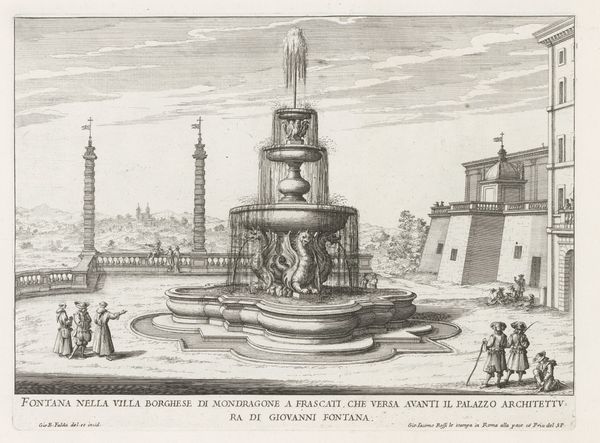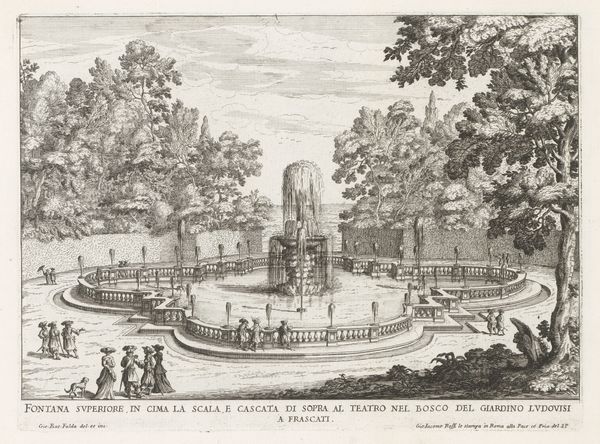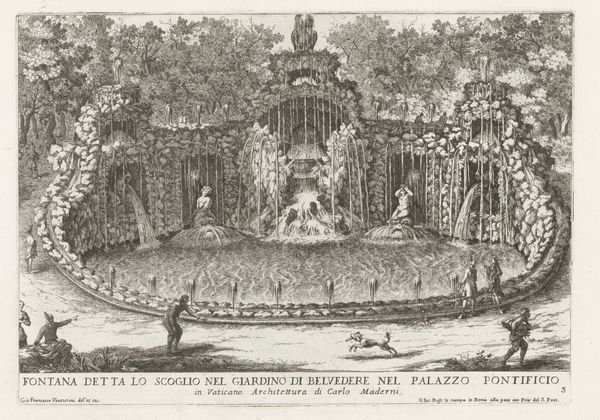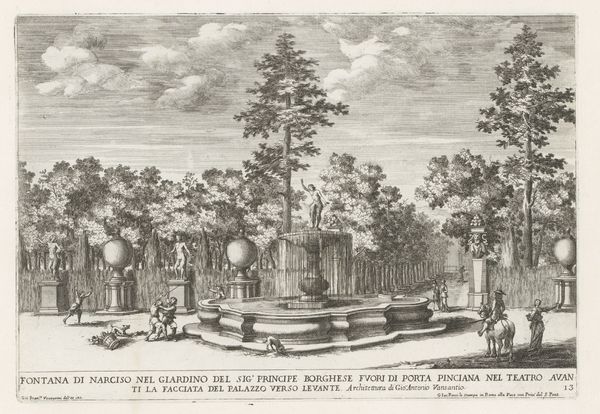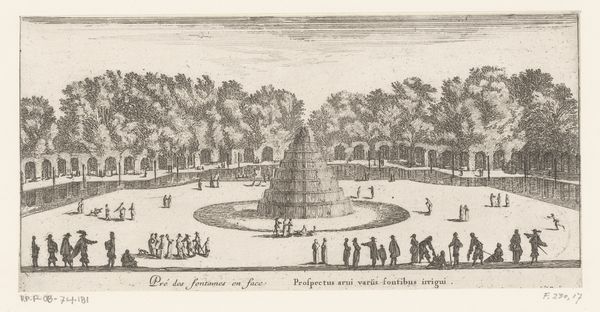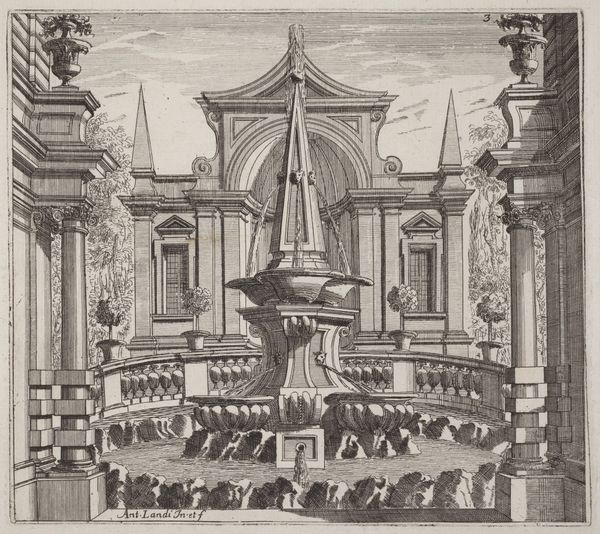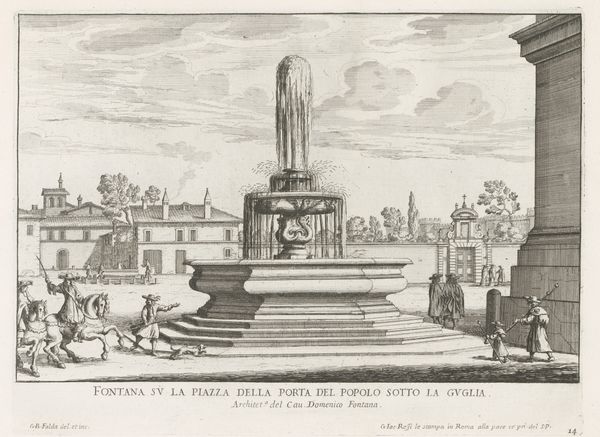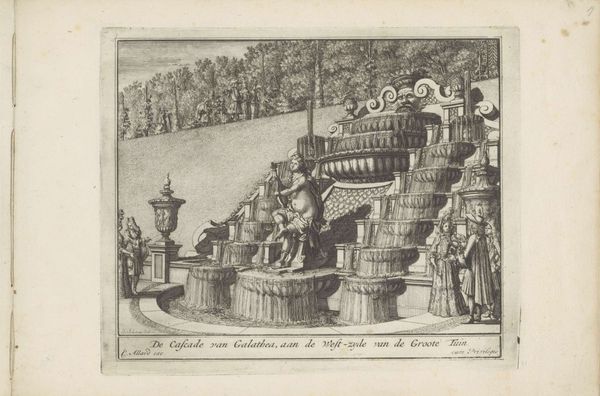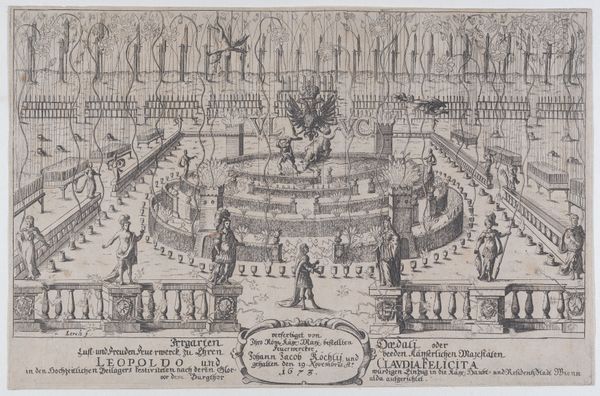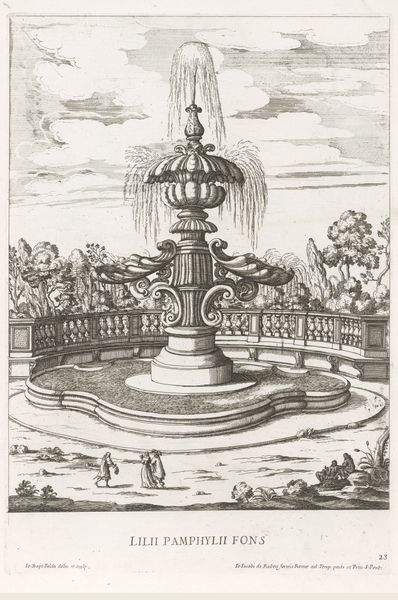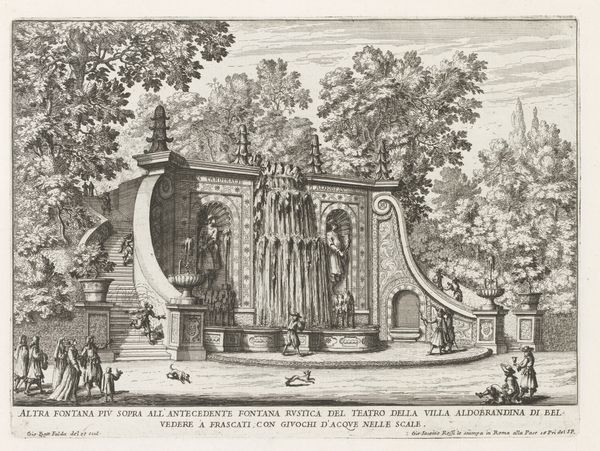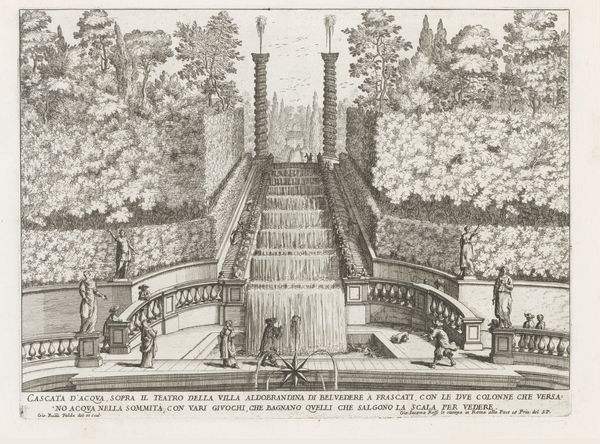
Fontein in de tuinen van de Villa Torlonia te Frascati 1653 - 1691
0:00
0:00
print, engraving
#
baroque
# print
#
landscape
#
line
#
cityscape
#
italian-renaissance
#
engraving
Dimensions: height 214 mm, width 286 mm
Copyright: Rijks Museum: Open Domain
Editor: This is Giovanni Battista Falda's "Fountain in the Gardens of the Villa Torlonia in Frascati," an engraving from between 1653 and 1691. It's quite impressive – this large, tiered fountain dominates the scene, and it’s interesting to see people enjoying the space around it. What social dynamics do you see at play within this constructed environment? Curator: This image isn't simply a representation of a beautiful fountain; it's a powerful statement about control, status, and the manipulation of nature. Consider the era: the Baroque period was characterized by displays of opulence and authority. The Villa Torlonia and its gardens, captured by Falda, served as stages for the elite. How does the careful landscaping, including the sculpted fountain and arranged trees, reinforce the power dynamics of the time? Editor: So it’s less about the beauty and more about the statement it makes about the people who commissioned it? Curator: Exactly. Look at the figures populating the print. They’re not just wandering aimlessly; their presence, dress, and actions reinforce a social hierarchy. The very act of controlling water, a vital resource, and transforming it into an extravagant display speaks to the owner's power and dominance. Even the landscape, arranged in line and order, serves as proof of command over the land and people. How might the construction of the fountain parallel the social constructions that governed Baroque society? Editor: That's a completely different way of looking at it than just appreciating its aesthetics! I didn’t even think of the manipulation of nature reflecting the societal power structures at the time. Curator: Considering the artwork in its social and historical contexts is key to a richer understanding of its message, not just as a pretty picture, but as a text of its time. Now, how can we use these observations to re-contextualize similar artworks in other periods? Editor: This perspective really opens up a wider range of possibilities for interpretation! Thanks for sharing.
Comments
No comments
Be the first to comment and join the conversation on the ultimate creative platform.
